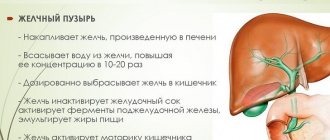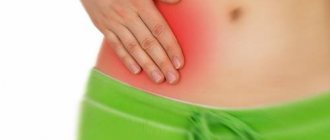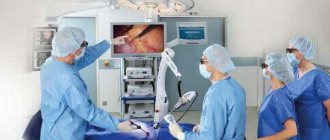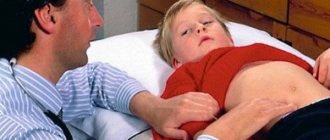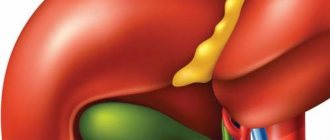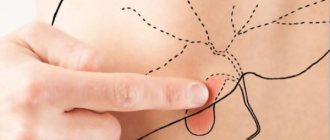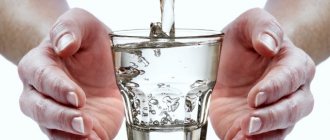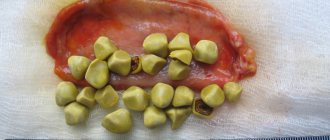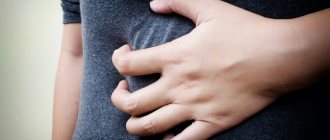The gallbladder plays an important role in the human body. It serves as a kind of storage for constantly produced bile. If this organ ceases to function properly, and drug treatments do not bring the desired result, then the only option is to remove the gallbladder. Like any operation, it has its own characteristics.
Why is the gallbladder removed?
The surgical procedure to remove the gallbladder (GB) is called cholecystectomy. According to statistics, gallbladder removal is one of the most common types of surgical intervention. However, it has a number of limitations; it is prescribed only if there are serious reasons.
Contraindications to gallbladder removal are:
- pancreatitis in the acute stage,
- malignant formations,
- last stages of pregnancy,
- cirrhosis of the liver,
- inflammatory processes in the peritoneum,
- inflammation of the gallbladder,
- adhesive formations,
- heart diseases,
- vascular diseases,
- kidney damage,
- respiratory tract diseases,
- hernia of the peritoneal wall,
- stone formation in the gallbladder in people over seventy years of age (in the absence of symptoms).
Gallbladder diseases are a common occurrence, so every person should know why the gallbladder is removed. Indications for removal of the gallbladder include lesions of the gallbladder, liver, and bile ducts. Often, experts recommend removing the gallbladder when it is necessary to remove stones from it. The gastroenterologist, surgeon and specialist in diagnosing diseases jointly decide in which cases it is necessary to remove the gallbladder.
Everyone worries about the consequences of removing the gallbladder, whether their lifestyle will change, and what the duration of recovery will be. When prescribing this procedure, the doctor will inform you about the risks of removing the gallbladder. Experts testify: it is men who often experience negative consequences after the procedure for removing the gallbladder. The postoperative stage involves adherence to dietary nutrition and lifestyle adjustments. Men are less disciplined, so they often violate doctor’s recommendations, which provokes deterioration.
The most common consequences of removing stones from the gallbladder are digestive failure, the occurrence of inflammation, and bleeding. Before studying information about whether removal of the gallbladder is dangerous and what it threatens people with, every person should understand that any operation has risks.
When prescribing gallbladder excision, you need to understand that problems may arise when removing the gallbladder. Often, removal of the gallbladder is associated with the elimination of seroma - accumulations of serous matter in the cavity of the gallbladder.
The specialist decides whether surgery to remove the gallbladder is dangerous based on the results of the patient’s examination. If you trust an experienced surgeon, follow the rules of preparation for cholecystectomy and take into account the recommendations of a specialist, then, as a rule, consequences after surgery are unlikely.
Contraindications to laparoscopic surgery to remove the gallbladder
Inna Lavrenko
auto RU
Despite the fact that most of these operations are performed using minimally invasive laparoscopic techniques, this intervention also has a number of contraindications. For example, laparoscopy cannot be performed if the patient has previously undergone any surgical operation on the abdominal organs.
This operation is also contraindicated if:
- the presence of pathologies of the cardiovascular system;
- respiratory diseases;
- with obstructive jaundice;
- in late pregnancy;
- in the presence of diffuse peritonitis;
- in the presence of malignant processes.
It is also prohibited to perform surgical intervention in case of blood clotting disorders, in case of atypical location of the internal organs of the abdominal cavity and in the presence of a pacemaker in the patient. If laparoscopy is contraindicated for the patient, but surgery is still necessary, they resort to traditional abdominal cholecystectomy.
Symptoms
Patients are often concerned about where the produced bile goes after the gallbladder is removed. In a healthy body, bile from the liver, acquiring the required concentration, enters the gallbladder, then into the duodenum.
After excision of the gallbladder, the liver and duodenum participate in the process of bile excretion, where bile enters after removal of the gallbladder. Bile becomes less concentrated and processes only small volumes of incoming food. Therefore, when removing the gallbladder, you need to adhere to the principles of fractional nutrition.
Removal of the gallbladder can provoke symptoms of biliary dysfunction - disruption of the bile duct system and sphincters that regulate bile outflow.
After cholecystectomy, many people note increased gas formation, a feeling of fullness, bloating, and loose stools. In addition to the painful sensations associated with it, such symptoms cause suffering to a person. Therefore, everyone should know what to do if they are constantly swollen and have attacks of bloating after surgery to remove the gallbladder.
Experts note cases where removal of the gallbladder does not solve the problem with the outflow of bile; sometimes this procedure only worsens the situation. Removing the gallbladder can provoke exacerbation of chronic diseases.
It is worth understanding in what cases a gallbladder with stones is removed. Diseases associated with stone formation are successfully treated with medications in the initial stages of development. If the patient experiences constant painful attacks, inflammation of the gallbladder occurs, and dangerous complications develop, then excision of the gallbladder is indicated.
Causes
Before a gallbladder removal is scheduled, an examination is performed. Only based on its results, a specialist determines whether a particular patient needs a gallbladder and whether it is necessary to undergo surgery to remove it.
Cholecystectomy, despite its widespread use in surgical practice, is not considered a routine procedure. The operation can provoke serious complications, even fatal. Decisions about when gallbladder removal is indicated are individual.
Common reasons for gallbladder removal include:
- malfunction of the HDD,
- blockage of the bile ducts,
- development of calcification,
- cholesterosis,
- perforation,
- extensive foci of inflammation in the gallbladder.
When these symptoms are identified, the specialist compares the need for cholecystectomy with the likely complications. The development of colitis is not uncommon after removal of the gallbladder, as is reactive type hepatitis and dysbacteriosis.
Experts cite stone formation, cholecystitis, and the occurrence of polyps as the main reasons for cholecystectomy.
When the gallbladder is removed, the development of cholecystitis should not be acute. Otherwise, there is a high risk of complications.
In what cases is cholecystectomy prescribed?
Indications for cholecystectomy surgery:
- cholelithiasis (the presence of stones in the bladder cavity that cannot be removed naturally);
- choledocholithiasis (stones in the bile ducts);
- acute cholecystitis (inflammation of the walls of this organ);
- chronic calculous cholecystitis;
- pancreatitis (inflammation of the pancreas);
- other pathologies that are fraught with serious complications.
The most common reason for cholecystectomy is cholelithiasis. The essence of this pathology is the formation of stones (calculi) in the cavity of the bladder, the material for which is the so-called biliary sludge (a suspension consisting of precipitated crystals of cholesterol or bile pigment (bilirubin) with an admixture of calcium salts).
The main danger of the growth of such stones is that they are able to migrate into the bile ducts, clogging them. If the lumen of the duct is completely blocked, immediate surgery is necessary. If the stones are large or there are many of them, a planned cholecystectomy is also recommended, the purpose of which is to prevent possible serious complications.
Read also: What choleretic drugs are needed when the gallbladder is bent?
Preoperative preparation
In each specific case, before cholecystectomy, the attending physician prescribes preparatory measures. They often consist of the following types of examinations:
- Laboratory tests of blood components.
- Magnetic resonance imaging. It is able to provide complete information about the nature and size of stones in the gallbladder, foci of inflammation, and scars.
- Electrocardiogram.
- Examination of the condition of blood vessels and organs of the respiratory system.
- CT scan. It is prescribed to identify adhesions and examine tissues located around the gallbladder.
Blood component tests will allow you to assess the condition of the patient’s internal organs and identify malfunctions in their functioning. Research includes:
- detailed and comprehensive biochemical analysis,
- testing for HIV infection, hepatitis and syphilis,
- conducting a hemostasiogram to check blood clotting,
- determination of blood group and Rh factor.
When the preparatory stage is underway, the patient is prescribed which doctor to go to before the gallbladder removal procedure. Visits to a therapist and dentist are required.
Gallstone disease (GSD) - description and signs
At the early stage of stone formation, this pathology may not manifest itself for a long time and not bother the patient. This complicates its diagnosis and often stones in the bladder are discovered by chance, during an ultrasound of the abdominal cavity for completely different indications.
At a late stage of its development, cholelithiasis is manifested by pain in the right hypochondrium, heaviness in the abdomen, bitterness in the mouth, nausea and stool disorders. The intensity of the pain syndrome may increase after eating fatty foods, with increased physical activity and as a result of stress.
As a rule, against the background of cholelithiasis, an inflammatory process (cholecystitis) occurs, which adds high temperature, chills and fever to the already listed symptoms.
The most serious consequence of the development of cholelithiasis is the migration of stones into the bile duct and its blockage. In this case, severe sharp pain occurs, the outflow of bile is disrupted, and the pressure inside the bladder increases. A painful attack can last up to several hours and be accompanied by vomiting, the masses of which contain bile.
No less dangerous complications of cholelithiasis due to cholecystitis are abscesses, tissue necrosis and perforation (violation of the integrity of the organ membrane), which leads to bile peritonitis. Accurate diagnosis of cholelithiasis is impossible without instrumental examinations, the most popular of which is ultrasound. This diagnostic technique allows not only to detect gallstones, but also to determine their size, number and location.
To clarify the diagnosis in difficult cases, the following diagnostic methods are additionally used:
- X-ray;
- intravenous cholecystocholangiography;
- MRI (magnetic resonance imaging);
- CT (computed tomography).
Types of surgery
Operations to remove the gallbladder with the least consequences are: classical - abdominal resection of the gallbladder and minimally invasive - laparoscopic cholecystectomy. The technique is determined by the doctor based on the state of health and the course of chronic diseases.
If the results are good, it is better when the gallbladder is removed laparoscopically, since it has a number of advantages over resection of the gallbladder using the abdominal method. Indications for surgery to remove the gallbladder are mainly cholelithiasis, which is the most common lesion of the gallbladder.
Operation cholecystectomy
Indications for gallbladder removal are:
- cholelithiasis;
- obstructive jaundice caused by blockage of the bile ducts;
- acute cholecystitis, when the inflammatory process cannot be stopped;
- chronic cholecystitis with frequent exacerbations and digestive disorders;
- severe persistent dyskinesia of the gallbladder;
- “porcelain” bubble due to the deposition of calcium salts in it;
- polyps, bladder and bile duct tumors.
Cholecystectomy can be performed urgently for health reasons in acute cholecystitis, obstructive jaundice; in other cases, the operation is performed routinely after a comprehensive examination of the patient.
Cholecystectomy of the gallbladder
Laparoscopic cholecystectomy and preparation for it
Laparoscopy of the gallbladder is indicated for inflammation of the gallbladder in the acute stage and stones. The advantages of removing the gallbladder using laparoscopic cholecystectomy include:
- minor injuries
- fast recovery,
- minor pain.
Before the operation, a standard examination for gastric resection is prescribed. On the eve of laparoscopy, you need to follow several important rules:
It is prohibited to eat or drink after 6:00 pm on the day before the scheduled procedure. A few days before surgery you need to eat light food. It is necessary to do cleansing enemas the evening before and the morning before the procedure. On the day of surgery, you should take a relaxing shower and wear fresh clothes.
In some cases, emergency laparoscopy is indicated. Then the attending physician is limited to the results of general studies.
Progress of cholecystectomy and types of operations
Surgical treatment can be offered in two classical ways - open abdominal surgery and a minimally invasive technique.
Types of intervention
Preparation
In this case, no special preparation is required; you just need to follow a number of recommendations before the procedure:
- a few days before surgery, exclude foods that cause increased gas formation from your diet;
- on the recommendation of a doctor, stop using drugs that affect blood coagulation;
- on the eve of the operation, you can have a light dinner or refuse to eat at all;
- Take a shower in the morning and change into clean clothes.
It is also necessary to do a number of tests and undergo some research methods:
- CT scan of the abdominal cavity;
- biochemical and general analysis of blood and urine;
- tests for sexually transmitted infections;
- coagulogram;
- Ultrasound of the bile ducts and gallbladder, as well as other abdominal organs;
- ECG;
- According to indications, it is possible to prescribe fibrogastroscopy and colonoscopy.
In some situations, consultation with specialists may be required.
Laparoscopy
Laparoscopy is the “gold standard” for surgical intervention on many organs. It is also considered the first choice when considering gallbladder removal.
In this case, the operation is carried out in several stages:
- Punctures are made in the abdominal wall, through which the instruments necessary for organ resection (video camera, trocars, manipulator) are inserted.
- To ensure a good view, carbon dioxide begins to be pumped into the abdominal cavity.
- The artery and duct are cut off, and coagulation is performed to stop the bleeding.
- The gallbladder is removed from the abdominal cavity, the instruments are removed, and the holes are sutured.
The duration of the laparoscopic procedure is no more than 60 minutes (in some situations it can increase to 120 minutes). This is often associated with difficulties in accessing the lesion due to anatomical features.
If there are stones in the organ, they are necessarily crushed into smaller stones. Also, if necessary, a specialist can place a drainage in the subhepatic space for the normal outflow of exudate that accumulates after the intervention.
The absolute advantage of this method is its minimal invasiveness, short, almost painless recovery period, minimal risk of complications and absence of cosmetic defects.
Laparoscopic method
Open surgery
With the cavity method of removing the gallbladder, access is made under the costal arch in the form of oblique incisions or along the midline of the abdomen. In this situation, the doctor has the opportunity to assess the condition of the organ, its ducts, measure them or examine them using contrast agents.
The operation itself includes the following points:
- An incision on the anterior wall of the abdomen with revision of the affected area.
- Separation, as well as ligation of the bile duct and arterial vessel that feeds the organ.
- Extraction of the gallbladder with treatment of its bed.
- If necessary, apply drainage.
- Postoperative closure of the wound surface.
Abdominal surgery is performed in case of an acute inflammatory process complicated by peritonitis, severe damage to the bile ducts, etc. The disadvantages of this method are the formation of a large surgical injury, cosmetic imperfections in the form of a scar and possible complications.
Stones in the gallbladder and ducts are one of the reasons for organ removal
Mini access
Sometimes abdominal surgery or laparoscopy is not available for some reason. In this case, minimal access cholecystectomy is performed.
It is an intervention characterized as something between surgical treatment options 1 and 2. The procedure consists of the same stages with the difference that for the manipulation the surgeon makes a small incision (from 3 to 7 cm) in the area of the right hypochondrium.
Inpatient observation depends on the type of intervention performed. The open method of surgery involves staying in the hospital for about a week, after which the stitches are removed.
With laparoscopy, the patient can be discharged after 2-3 days. Restoration of working capacity in the first case occurs within a month or two, and after the second within 3 weeks. A sick leave certificate is issued for this entire period.
Postoperative period
You must strictly adhere to the doctor's recommendations after surgery to remove the gallbladder. When the procedure is completed, dry fasting is indicated for 4-6 hours. When it will be possible to get out of bed after removal of the gallbladder, the specialist decides based on the patient’s condition.
Mainly the attending physician is asked: “How soon will I be discharged if my gallbladder was removed?” The length of hospital stay depends on the presence of pain, the nature of complications, and the speed of recovery. The patient’s well-being after removal of the gallbladder is the main factor in the decision-making process to transfer him to outpatient treatment.
As a rule, the consequences of the cavity method, which removes the gallbladder, are more severe than the outcome of the minimally invasive method. Therefore, the length of stay in hospital treatment depends on the type of gallbladder excision. After laparoscopic surgery to remove the gallbladder, recovery is faster.
In the postoperative period, a specialist may prescribe: a special diet, medications with a choleretic effect, medications.
During the first month after surgery, you need to eat often and in small portions. Daily water consumption is 1.5 liters. The intensity of physical activity should be kept to a minimum.
Answers to important questions
Even at the stage of planning cholecystectomy, patients have many questions regarding the specifics of performing surgical procedures, rehabilitation and lifestyle changes:
- How long does gallbladder removal surgery take? With minimally invasive intervention, the procedure lasts on average 1.5-2 hours. In the case of a classic operation, it takes from 3 to 5 hours.
- Is gallbladder removal surgery dangerous? The procedure itself is extremely rarely accompanied by severe blood loss. But during the rehabilitation period, patients may experience early and delayed complications.
- What are the risks of removing the gallbladder? Radical treatment changes the activity of the liver, which leads to deterioration of intestinal motility. Cholecystectomy is fraught with perforation of the biliary tract and duodenum, duodenitis, peritonitis, penetration of bile into the peritoneum, inflammation of the navel, and pancreatitis.
- How long do they live after removal? If medical recommendations are followed, life expectancy is not reduced.
- Why does my right side hurt? Due to resection of the bladder, the outflow of bile from the bile ducts is disrupted, which leads to stretching of their walls and pain.
- When can you wash after surgery? You can shower after the surgical wound has healed. The rate of tissue regeneration is determined by the type of surgical technique. After laparoscopy, water procedures are allowed after 7-10 days, and after abdominal surgery - after 2-3 weeks.
- How long does sick leave last after surgery? Gallstone resection is a serious operation. After it is performed, the patient must remain in the hospital department for at least 3-7 days. When using the laparoscopic method, sick leave is given for 10 days, and when using the abdominal method - for 15-30 days.
- What should not be done after bladder resection? Patients should give up alcohol, smoking, fast food, and excessive physical activity.
- What medications should you take after gallbladder removal? All patients are prescribed hepatoprotectors, enzyme preparations, and choleretic agents. For painful sensations in the abdomen, be sure to take antispasmodics.
Postcholecystectomy syndrome
The syndrome is the symptoms that appear as a result of excision of the gallbladder. The reasons for this phenomenon may be:
- Poor preparation at the preoperative stage. We are talking about the patient’s failure to comply with the preparation rules or incomplete comprehensive preoperative examination.
- Insufficient qualification of the surgeon.
- Violation or loss of performance of the gastrointestinal tract. This can manifest itself in the form of a reduction in the amount of bile produced, a malfunction of the organs of the digestive system, and pathological processes that provoke a violation of bile outflow.
- Reduced protective functions.
- Disruption of the bile outflow process.
- A narrowing or blockage of the papilla of Vater of the duodenum that impedes bile outflow.
- Inflammatory processes.
- Duodenogastric reflux.
- Gastroesophageal reflux disease.
- Irritable bowel syndrome.
Complications in the form of postcholecystectomy syndrome after removal of the gallbladder using cholecystectomy have a number of symptoms. The most common of them include:
- Prolonged painful attacks. They are especially strong after eating and at night. Often accompanied by vomiting and paroxysmal feelings of nausea.
- Frequent loose stools.
- Increased gas formation.
- Sharp weight loss. In some cases, severe exhaustion may occur.
- Formation of cracking in the corners of the mouth.
- General exhaustion of the body in the form of increased drowsiness, physical weakness.
If these symptoms are detected, drug therapy is prescribed.
Complications after cholecystectomy
The doctor informs the patient about all the complications that may arise after removal of the gallbladder. But they are quite difficult to predict, since they depend on various reasons.
Complications during surgical removal of the gallbladder can provoke:
- inflammation of the gallbladder in the chronic stage,
- age,
- excess weight,
- atypical structure of the gallbladder,
- foci of inflammation in the tissues of the operated area.
Complications after removal of the gallbladder are divided into:
- Early. They manifest themselves in the form of recurrent bleeding, peritonitis, purulent inflammation under the diaphragm and liver.
- Late. This type of complications includes jaundice and the development of diseases that were not taken into account before the procedure of excision of the gallbladder.
- Operating rooms – consequences of unskilled actions of a surgeon.
To avoid complications after surgery to remove the gallbladder, it is necessary to undergo a comprehensive examination, trust an experienced, qualified surgeon, and follow the postoperative recommendations of a specialist.
Consequences
If the patient's condition does not worsen, it will take several months for him to fully recover after surgery to remove the gallbladder. However, whatever the consequences if the gallbladder is removed, it is important to follow a number of rules. It is recommended to begin restoring digestion after removal of the gallbladder with a special diet.
To avoid undesirable consequences after removal of the gallbladder, comprehensive treatment is recommended. Experts advise including traditional methods in it.
The consequences of gallbladder removal in women often manifest themselves in the form of prolonged, intense pain in the right hypochondrium.
The patient may experience attacks of nausea associated with severe painful attacks in the navel area. If at the same time he often vomits, has chills, or has a fever, he needs to see a doctor. Such consequences of gall bladder surgery can be extremely dangerous.
If the gallbladder is removed, a person often experiences attacks of pain of varying intensity. They do not always indicate the occurrence of complications. In this way the body can adapt to the new state.
If the patient is worried about something, he should in any case consult a doctor for advice. The specialist will explain how removal of the gallbladder affects the body, conduct an examination and reassure the patient. If symptoms of complications are detected, effective therapy will be prescribed.
An organism without a gallbladder
What may be the consequences of removing the gallbladder were noted earlier. After cholecystectomy, the body, regardless of its outcome, first adapts to functioning without the gallbladder. The liver continues to produce bile in the same volumes; there is no place for it to be stored after excision of the gallbladder. There is a restructuring of organ functions.
Removal of the gallbladder is associated with the following consequences for the body:
- Microflora imbalance. Bile performs a bactericidal function. In the absence of gallbladder, the duodenum is colonized by bacteria.
- The force of pressure on the walls of the bile ducts increases.
- The mechanism of bile use changes. Cholecystectomy provokes a situation in which bile is more difficult to absorb, for this reason large volumes of it are excreted.
After removal of the gallbladder, your health condition worsens, but following the recommendations of a specialist will help speed up the healing process and return to your normal rhythm of life. You can check with your doctor about what happens in the body after removal of the gallbladder. The specialist will prescribe permitted foods during the recovery phase and explain how the process of eating should occur if the digestive system is not functioning properly after removal of the gallbladder.
To avoid undesirable consequences in the absence of a gallbladder, you should follow table No. 5 a in your diet for several months. This is a gentle diet that excludes fatty, fried, spicy foods and baked goods made from premium flour.
In the absence of gallbladder, tubing is recommended. This procedure improves the functioning of the biliary tract. Along with this, special physical therapy aimed at stimulating bile outflow is indicated.
“What happens if a woman’s gallbladder is removed?” - a question that worries patients. Indeed, excision of the gallbladder can cause complications in women if they decide to become pregnant.
After resection of the gallbladder during pregnancy, a woman may suffer from debilitating toxicosis. Experts recommend delaying conceiving a child. After laparoscopic excision of the gallbladder, at least 2 months should pass, after open surgery - at least six months.
Rehabilitation after gallbladder removal
The bile ducts and bladder play an important role in the functioning of the digestive system. They ensure that bile enters the intestines to break down food and destroy infections (including helminthic ones). To restore intestinal motility, a complex of therapeutic measures is used:
- therapeutic diet;
- pharmacotherapy;
- gymnastics;
- physiotherapy.
Compliance with medical recommendations reduces the risk of complications and disturbances in the gastrointestinal tract.
Diet
If the gallbladder is removed, its work must be compensated.
Rational nutrition is one of the main components of the life of patients. Spicy and fatty foods, raw vegetables and fruits, and alcohol are excluded from the diet. 80% of the menu should consist of heat-treated products.
After resection of the bladder, it is recommended to use:
- baked and boiled vegetables;
- cream soups;
- low-fat broths;
- steam cutlets;
- boiled fillet;
- casseroles;
- liquid porridge;
- vegetable oil.
After cholecystectomy, they eat fractionally in small portions. Excluded from the menu:
- sorrel;
- carbonated drinks;
- conservation;
- legumes;
- canned meat;
- confectionery;
- spinach;
- roasted sunflower seeds;
- coffee;
- radish.
For 2 months after removal of the gallstone, the diet is strictly followed. During this period, it is undesirable to consume meat or fruits without sufficient processing.
Medicines
To digest food and stimulate the flow of bile from the bile ducts, the doctor prescribes the following drugs:
- choleretic (Artichol, Allochol, Holosas) - reduce the viscosity of bile, thereby accelerating its release from the biliary tract;
- hepatoprotectors (Essliver Forte, Phosphogliv, Ursofalk) – stimulate bile synthesis and protect liver cells from destruction;
- enzymes (Festal, Pancreatin, Mezim) - normalize intestinal motility by accelerating the processes of food digestion.
If after removal of the gallbladder the right side hurts, take antispasmodics - Mebeverine, No-shpu, Dolce-40, Nispasm.
Gymnastics
Physical exercise accelerates the restoration of the functions of the gastrointestinal tract and stimulates intestinal motility. To expand the bile ducts and heal tissue after excision of the bladder, do gymnastics. Experts advise learning diaphragmatic, that is, abdominal, breathing. 2 months after surgery, exercises are performed to strengthen the abdominal muscles. If the temperature rises or belching occurs after exercise, consult a doctor.
Treatment
The drug therapy prescribed by the doctor after removal of the gallbladder is minimal and is indicated only when pain occurs. To minimize the consequences after removal of the gallbladder, traditional medicine methods are used.
The treatment and health complex for recovery after excision of the gallbladder includes:
- physiotherapeutic measures,
- treatment in sanatoriums,
- systematic breathing exercises,
- swimming (allowed after 2-3 months from the date of surgery),
- caring for the incision site,
- regular walks,
- healthy, long sleep and proper rest regime.
Compliance with these measures in combination with drug therapy and the use of traditional medicine methods will allow you to quickly recover.
Drug treatment after surgery
Antibiotics are indicated to prevent worsening after gallbladder removal. If pain occurs, the doctor prescribes analgesics, then antispasmodics. This therapy is carried out while the patient is in hospital.
After discharge, medications with ursodeoxycholic acid are prescribed to prevent the appearance of stones. In some cases, taking such drugs lasts up to 2 years. After removal of the gallbladder, you should take medications with bile and enzymes (Allochol, Cholenzym) and drugs to increase the production of your own enzymes (Ursosan, Ursofalk).
Also, to combat diarrhea that often accompanies the healing process, drugs that normalize the intestinal microflora are prescribed.
Traditional methods of treatment
Methods of curing diseases with the help of medicinal herbs are famous for their high efficiency, accessibility, and a minimum number of contraindications. After cholecystectomy, it is necessary to stimulate bile excretion. For this purpose, decoctions of immortelle, yarrow herb, milk thistle, tansy flowers and St. John's wort will be useful. These medicinal plants also cleanse liver cells of toxins.
It is necessary to take into account that herbal treatment must be agreed upon with a specialist. He will prescribe the dosage and duration of the course of using medicinal plants.
Recovery
The rehabilitation period consists of several stages:
- the first 2 days - during this time, in most cases, possible complications appear,
- 3-6 days for laparoscopic excision of the gallbladder, up to 2 weeks for abdominal surgery,
- from 1 to 3 months - the duration of this stage depends on the method in which the gallbladder was removed.
The first two stages take place in a hospital under medical supervision, the third - at home after discharge. After six months, a person who has undergone excision of the gallbladder is recommended to undergo treatment in a sanatorium. Such dates are very approximate, since after removal of the gallbladder, the condition may worsen, which will entail long-term treatment.
There are cases in which the consequences of gallbladder removal affect the quality of life. For example, an abscess that develops as a result of excision of the gallbladder can lead to death if medical help is not sought in time. Therefore, while undergoing outpatient treatment, painful symptoms cannot be ignored; in case of any atypical course of recovery, you should consult a doctor.
It is worth noting: if the consequences of gallbladder removal preserve working capacity, disability is not assigned.
Acute cholecystitis
The disease is characterized by a strong inflammatory process of the walls of the organ. The main cause of the disease is a violation of the outflow of liver juice.
Signs of the disease:
- Bloating.
- Vomit.
- Nausea.
- Heat.
- Sharp pain in the right side under the ribs.
If cholecystitis is not complicated by the presence of stones, then the disease is treated with medications. The bacterial species is eliminated with the help of antibiotics and hepatoprotectors.
Much becomes complicated if stagnation of bile and high cholesterol levels form dense fractions. They can block the exit of the duct and liver secretions cannot enter the intestines.
In addition, there is a high risk of damage to the canals by stones. As a result, an inflammatory process develops.
The most dangerous thing is that a rupture may occur and all the contents will fall into the abdominal cavity. Peritonitis forms, which is difficult to treat and often leads to death.
If an open hole appears between the gallbladder and the intestines, then everything that was inside will come out. Sepsis develops. All this leads to severe fatal consequences.
In this case, doctors have no choice but to remove the main source of inflammation. An emergency cholecystectomy is performed.
They can also remove an organ when the functioning of the biliary system is severely impaired and this affects the condition of the pancreas.
Initially, doctors prescribe drug treatment, but when the result does not manifest itself, they decide on surgical intervention.
Cholecystectomy is possible only if other methods cannot help the person.
Only after accurate diagnosis using hardware instruments and laboratory tests do they come to the conclusion whether it is possible to do without cholecystectomy or whether this is the only correct option.
Exercise stress
Intense physical activity is prohibited for the first time after removal of the gallbladder. As a rule, a couple of months after cholecystectomy, low-intensity exercise in the form of walking is allowed. They effectively eliminate bile stagnation.
If the patient’s condition has not worsened, it is recommended to add therapeutic exercises to regular walks, which include special exercises and a breathing complex. These easy-to-follow activities can improve your well-being and speed up your recovery.
Biliary dyskinesia
With this type of disease, the motor and motor work of the walls of the gallbladder and its ducts is disrupted. The tone of the smooth muscles of the biliary apparatus constantly weakens or increases.
Causes of dyskinesia:
- Mental disorders.
- Poor nutrition.
- Sedentary lifestyle.
- Hormonal imbalances.
- Gastrointestinal diseases.
- Inflammatory processes in the organ and its ducts.
With dyskinesia, blockage of the ducts with stones may occur. As a result, bile cannot enter the intestines, and the person begins to show symptoms.
Often the disease is complicated by other processes, which leads to a serious condition.
In this case, the patient has no choice but to remove the gallstone with the resulting stones. Sometimes duct drainage may be necessary.
Diet
Adverse consequences after removal of the gallbladder can be caused by foods included in the diet. It is important to follow a diet as recommended by your doctor.
The list of main products allowed after gallbladder removal includes:
- lean meats,
- light soups,
- oatmeal, buckwheat,
- low-fat fermented milk products.
Prohibited products include:
- fried, fatty foods,
- spicy, salty, pickled food,
- fish,
- sweet food,
- chocolate,
- strong brewed tea, coffee,
- alcoholic drinks,
- sparkling water,
- bakery products made from premium flour.
Along with this, it is highly advisable to quit smoking. During the postoperative period, it is necessary to monitor the regularity of bowel movements. Under no circumstances should constipation be allowed.
